Last Chance to Catch NYC's Holiday Notalgia Train
We met the voices of the NYC subway on our nostalgia ride this weekend!


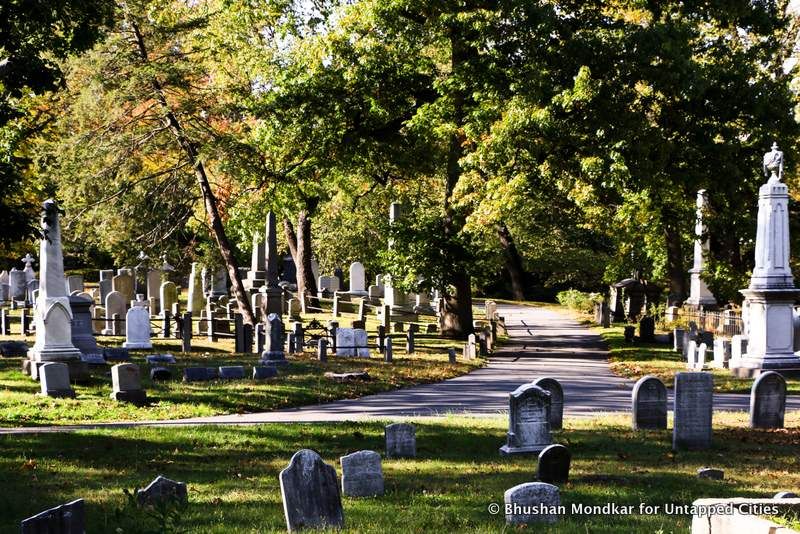
Marc Gordon, AIA, LEED®AP BD+C Partner, is a practicing architect in New York, where he’s a partner at the firm Spacesmith. This is his second article for Untapped Cities, following up on 8 Disappearing Neighborhoods and Districts.
On any given day, thousands of people pass by Trinity Church Graveyard at Broadway and Wall Street. Tourists walk among the headstones and workers eat lunch on the benches. It is a very picturesque and historic location and to some, it might be the only cemetery they are aware of on the island of Manhattan.
However, throughout Manhattan’s history there were scores of cemeteries, graveyards, and potters fields located throughout the island. While some of them still exist, many were abandoned, destroyed or moved, with their inhabitants reinterred to the outer Boroughs. Previous burying grounds, were built upon, became parks or were only rediscovered when being excavated for new construction. This is a brief history of the burial grounds associated with the Trinity Parish.
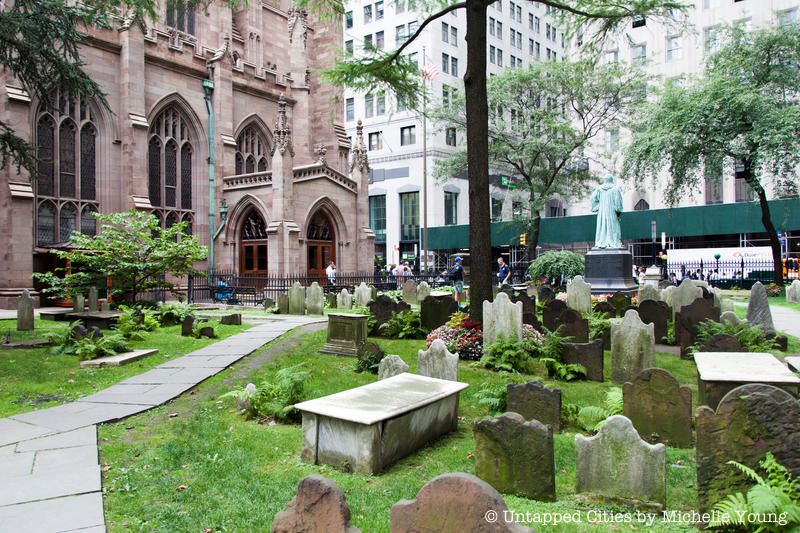
Trinity Church, established in 1696 by Charter of King William III, is an active Episcopal parish. The Church building, the third on this site which was designed by Richard Upjohn, (one of the co-founders of the AIA), towers over an historic cemetery where members of the first continental congress, revolutionary war heroes, a signer of the Declaration of Independence, a famous inventor and a recent Broadway star named Alexander Hamilton are interred. Hamilton also happens to be one of the founding fathers of the United States, was the first Treasury Secretary, started the Coast Guard and the founded the New York Post, just to name a few accomplishments.
Aaron Burr, the Vice President at the time, mortally wounded Hamilton in a Duel in 1804 in Weehawken, New Jersey. Burr was serving as V.P under Thomas Jefferson, but was being dropped from the ticket for a second term of Jefferson’s Administration, so Burr decided to run for Governor of New York instead. He was soundly defeated by Morgan Lewis. Burr blamed Hamilton for being dropped from Jefferson’s administration and subsequent defeat for the Governorship due to Hamilton running a vigorous campaign against Burr’s election.

Burr challenged Hamilton to a duel, which took place in in New Jersey because dueling was outlawed in New York. Hamilton was mortally wounded and was taken back across the Hudson River to Manhattan where he died at the home of William Bayard, a friend, on Jane Street in the village. Burr was indicted for murder but the case was dropped and he finished out his vice presidency. Alexander Hamilton’s grave sits along the southern fence of the cemetery and is near a marker of his son Philip’s grave, who ironically was shot in a duel in 1801 at the same spot in Weehaken, by George Eacker. Philip Hamilton called out George Eacker after hearing Eacker’s public criticism of his father at a speech at Columbia University.
The cemetery, a national historic landmark is in a beautiful park setting with manicured lawns and flowers. However, this wasn’t always the case. As the city grew around the church, the population increased. The neighborhood became more commercial and the cemetery had no room for expansion. However, more interments occurred, until there were tens of thousands of bodies buried there. The situation became dire after the yellow fever outbreak of 1822. It was not known exactly how many were buried there, but many reports of shallow graves, exposed caskets and the stench of decomposing corpses, especially in the summer, led the city to ban further burials at Trinity Cemetery.
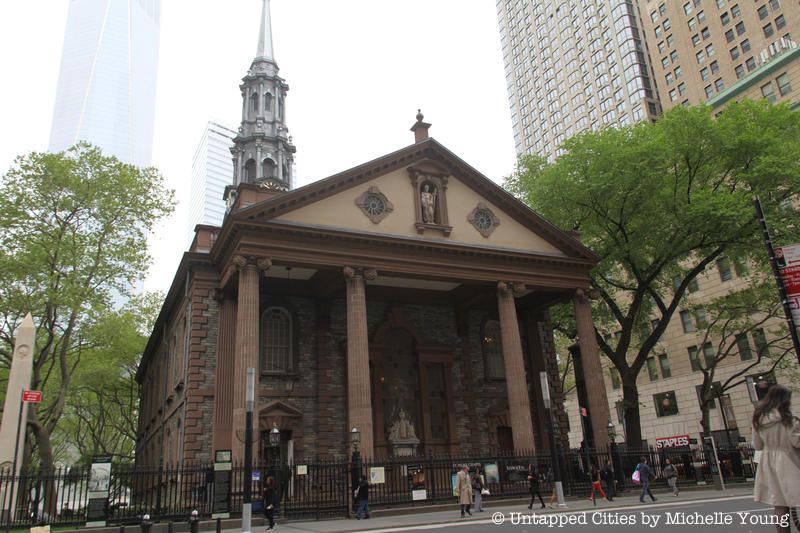
St. Paul’s Chapel, part of Trinity Parish located a few blocks north on Broadway holds the Parish’s second cemetery. This chapel built in 1766 was where George Washington attended services after being inaugurated as President at Federal Hall on Wall Street in 1789.
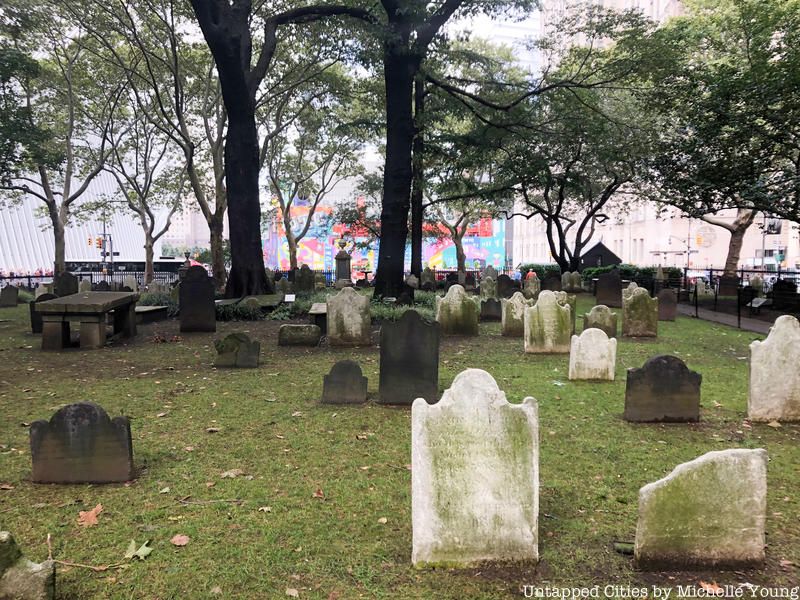
Many notable figures and prominent New Yorkers are also buried here, including George Eacker, who mortally wounded Philip Hamilton. The chapel, which has an entrance on Broadway facing east, has a steeple facing the main cemetery yard on the west, which once skirted the Hudson River. The Cemetery is now several blocks from the waterfront due to landfill and expansion.
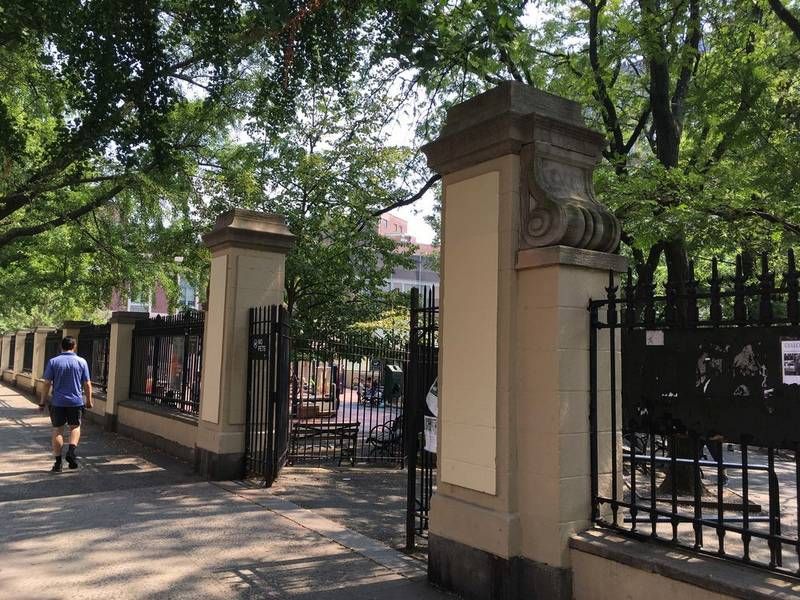
Photo by Marc Gordon
Trinity’s third cemetery was located on the east side of Hudson Street between Clarkson and Leroy Street in Greenwich Village. The cemetery served as a burying ground between 1805 and 1852 for the poor and middle class. It is believed that 10,000 burials occurred there. This cemetery was associated with St. John’s Chapel on Varick Street, a magnificent example of Georgian architecture designed in 1807 by John McComb, the architect of City Hall. The Chapel fronted a park which created one of the most exclusive residential neighborhoods in New York.
To the shock of local residents, the parish sold the park to the Hudson River Rail line in 1867, which used it as a freight terminal. Subsequently, the parishioner’s attendance dwindled along with much of the residential neighborhood. The cemetery fell into a state of disrepair. After a five year legal battle the city took over the cemetery in 1895 under the Small Parks Act for conversion into a park.
In 1896 the city announced that families wishing to remove remains to do so, but only 250 graves were removed. By 1898 construction of the James J. Walker Park was completed. In 1912, the city widened Varick Street for the extension of the subway and St. John’s Chapel was demolished. James Walker Park has a softball field, swimming pool, playground, and a bocce court. Most visitors have no idea what lies below their feet. But near the fence line along Leroy Street is a remnant of what was there before. A firefighter’s memorial for two firemen belonging to the Eagle Fire Engine Company who lost their lives in the line of duty remains as a reminder of the Parks past incarnation.

Located 10 miles from Trinity Church in Washington Heights at the site of the Battle of Fort Washington and the former estate of Artist and naturalist James Audubon, lies the last and largest of Trinity Church’s Cemeteries, which by the way still accepts burials under certain circumstances. It was founded in 1842 after outbreaks of cholera in lower Manhattan curtailed burials downtown. James Renwick and later Calvert Vaux, one of the architects of Central Park, designed Trinity Cemetery as a rural ornamental cemetery. The 24-acre hilly cemetery is situated between 154th Street and 155 Street and is bisected by Broadway.
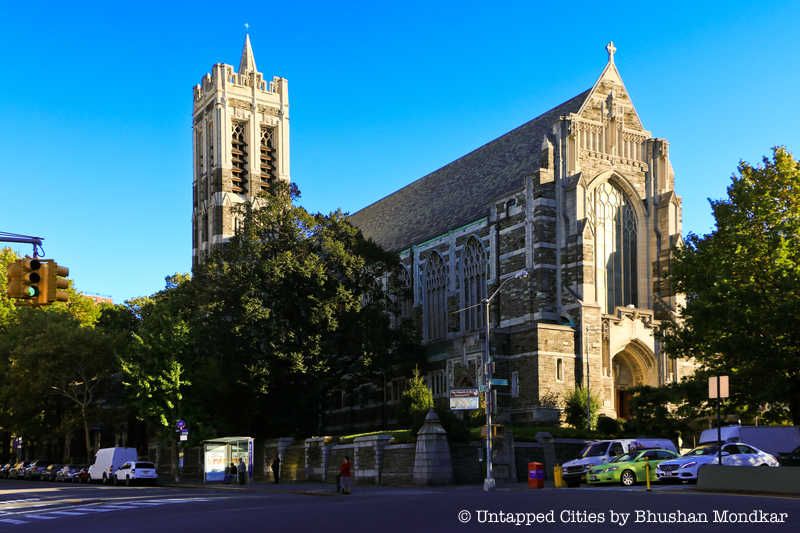
The cemetery absorbed the Church of the Intercession (with its crypt) on the North West corner of Broadway and 155th Street. Notable inhabitants include James Audubon, the Astor Family, actor Jerry Orbach of ‘Law and Order’ fame, Eliza Jumel who divorced Aaron Burr,and a couple of Mayors, most recently Ed Koch who famously stated that he couldn’t stand to leave Manhattan, even in death.
Next, check out 14 of NYC’s Smallest Cemeteries and
Subscribe to our newsletter